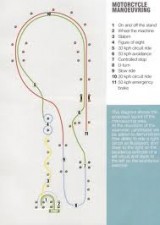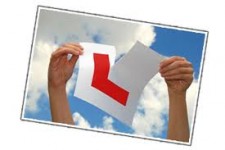The motorcycle practical test is divided into two parts called
Module 1 and Module 2
You must pass Module 1 before you can take Module 2.
No matter what size motorcycle you are taking your test on.The test is the same. With both tests to be taken on the same category bike
All Our courses teach you to be a good motorcyclist, not just to scrape through the test, so you’ll be in good shape before you go to your motorcycle test appointment and ready to earn yourself the result you’re looking for!
With Fresh Start motorcycle Your instructor will probably train you for mod 1 and Mod 2 at the same time, then when you pass mod 1 you will also be ready for mod 2.
You may be able to sit mod 2 test on the same day. But normally it a couple of days later. Depends on the amount of tests that are free.
We can book your mod 2 later in the same day if you like but if you don’t get a pass Mod 1 you will lose the payment for mod 2. It’s up to you.
We recommend that you pass mod one first then book in for the first mod 2 we can get
 Module 1
(off-road manoeuvres)Module 1 takes place at a safe,
off-road, DSA Multi-Purpose Test Centre (MPTC). Normally
Atherton
Module 1
(off-road manoeuvres)Module 1 takes place at a safe,
off-road, DSA Multi-Purpose Test Centre (MPTC). Normally
Atherton
You must take with you your CBT certificate (DL196), your Theory and Hazard Perception Test pass certificate (less than 2 years old) and a valid licence. If this is your first motorcycle test (ie you are not upgradeing to a larger licence). You must also be wearing suitable clothing.
You will first be given a briefing and then start these manoeuvres between coloured cones
* Manual handling – taking the bike off its stand and reversing it from one cone ‘parking bay’ into another
* Slow control steering (slalom and figure of eight)
* Slow ride: this will be observed as you ride to the next exercise
* U turn
* Circuit bend and controlled stop carried out between 30 km/h and 50 km/h (about 20 mph to 30 mph) followed by a controlled stop in the area marked by blue cones – speed not measured
* Cornering and emergency stop – speed measured (min speed 50kph – about 32mph)
* Cornering, avoidance exercise and controlled stop – speed measured (min speed 50kph – about 32mph)
In the two high speed exercises if you don’t reach the minimum speed of 50kph you’ll be given a second chance to do those exercises again.
And that’s the end of Module 1. It takes, on average, about 22 minutes.
If you’ve reached the required standard your examiner will issue you with a pass certificate.
If you fail Module 1 you must wait three full working days before being eligible to retake it.
Module 2 Test (on road rideing )
As with Module 1 you must take with you all the necessary documents including your Module 1 pass certificate.
You must be using the same category and size of bike in both modules.
You’ll be fitted with a radio receiver and then you’ll be taken outside for the eyesight test which consists of reading a number plate from a distance of about 20 metres. If you fail this (after a third attempt) the test will not continue.
If you pass the eyesight test you will be asked two motorcycle safety check questions, one ‘show me’ and one ‘tell me’. One or both questions answered incorrectly will result in one driving fault being recorded.
After a briefing and radio test you will then go out onto the road with the examiner following you and giving you instructions.
You’ll be riding through various road and traffic conditions and performing a number of manoeuvres in various situations such as
* Pulling up on the left behind a parked vehicle and moving off again when it’s safe to do so
* Left and right turns onto and off main roads
* Roundabouts
* Traffic lights
* Pedestrian crossings
* Hill start (if possible)
There is a section of the test called “Independent Riding” in which you will be asked to follow the traffic signs to somewhere or a series of directions or a combination of both.
Throughout the test your examiner will watch you and will be looking to see if you
* Make appropriate progress along the road
* Keep up with the traffic while keeping a safe distance from the vehicle in front
* Show confidence and good judgement
* Choose the correct speed for the type of road, density of traffic and weather
* React correctly to road signs and speed limits
* Be aware and react correctly to what other road users are doing, including pedestrians, cyclists and animals
 * Ride safely
* Ride safely
* Comply with correct road procedure
* Obey traffic signs
* Carry out the set exercises correctly
You should not be over-cautious. For example, you must not ride too slowly as you could be holding up other traffic and you must not stop and wait when it’s safe and normal to proceed.
After about 40 minutes of road riding you will be back at the test centre where the examiner will tell you if you have passed or failed. You instructor can be present at this point. Your driving test report will identify areas where any mistakes were made
If you fail your module two test, you must wait 10 full working days before being able to retake the module.
SOME REASONS FOR FAILING
On the fail sheet, given out by DSA, the examiner can check 47 different boxes as a fault.
You can fail on 1 serious fault, 1 dangerous fault or a combination of driving faults of which you are allowed up to 15 (up to 5 in Mod 1 or up to 10 in Mod 2). However, four driving faults in the same box may result in a serious fault, and therefore a fail.
Some examples of serious and dangerous errors are
* Dangerous or illegal manoeuvres or actions such as turning right or changing lanes without looking over your shoulder
* Failure to obey traffic signs such as No Entry signs, speed limits, or traffic lights
* Failure to cancel an indicator leading to a potentially dangerous situation
* Failure to observe lane markings
* Riding too slowly where it was safe to ride more quickly
* Pulling out in front of another vehicle at a junction

